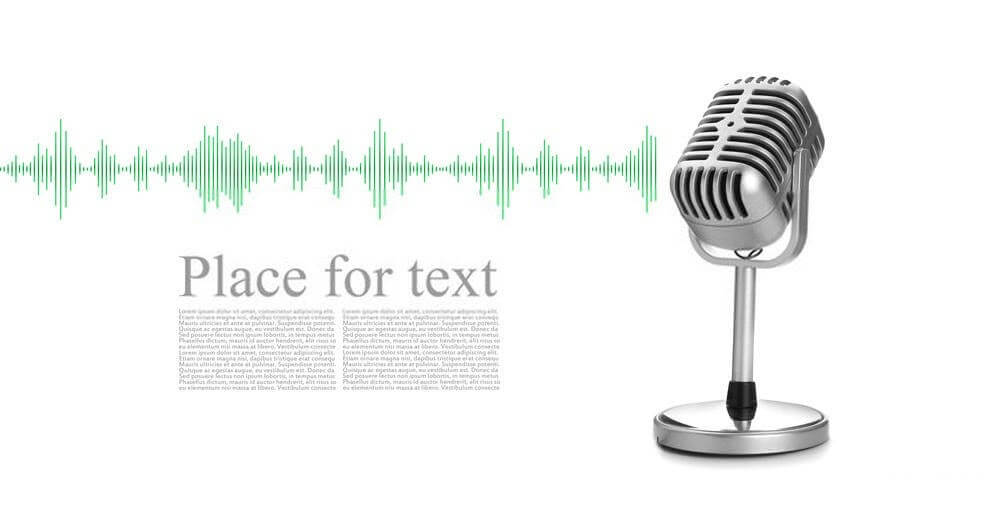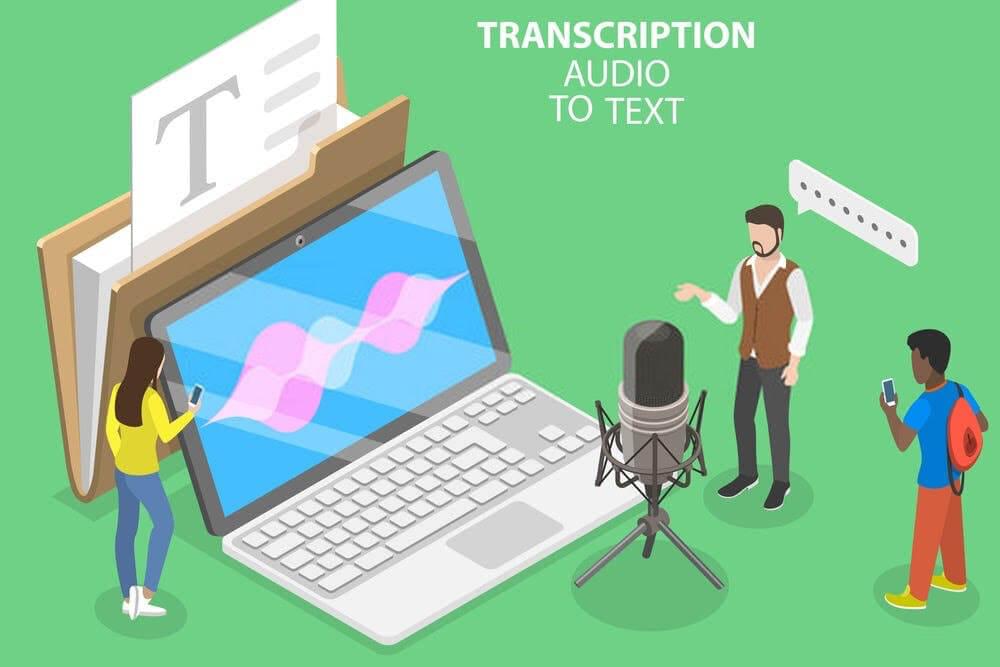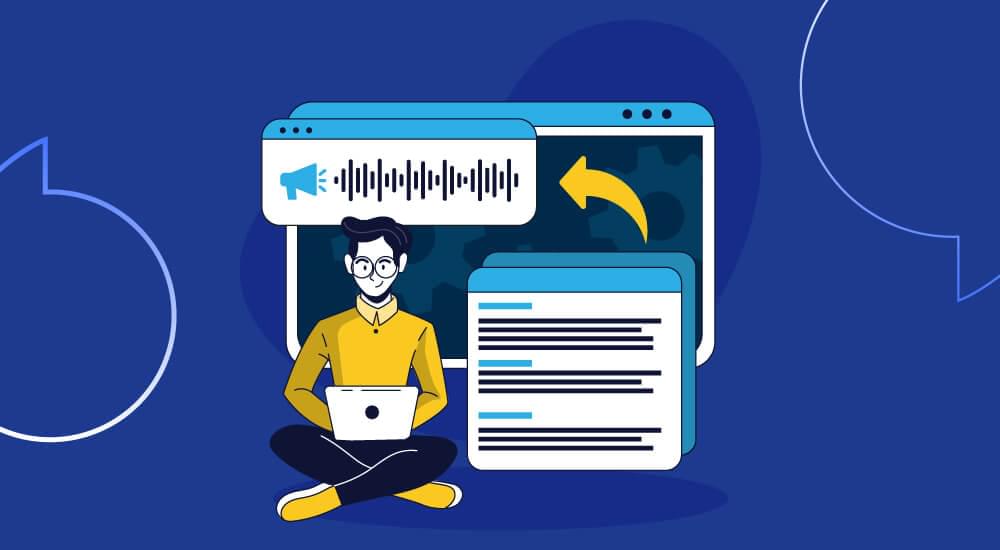voice technology
What is Spoken Word? The Brilliant Ways Spoken Word Audio Can Help
Spoken word audio, which includes podcasts, audiobooks, talk radio, news, and sports, is picking remarkable fame. The ever-accelerating growth of podcasts and audiobooks has given a significant boost to spoken-word audio, as it takes its share from the popularity of music.
The technology of spoken-word audio is increasing at an astounding rate, as you can analyze from the statistics of the US, it has risen from 8% usage to 30% in the past six years. Meanwhile, the ratio of music fame has decreased to 8% in the last six years.
This is the recent data from Spoken Word Audio Report from NPR and Edison Research, giving us an in-depth look into the ever-evolving audio revolution: trends, listeners’ behaviors and choices, and how they are changing over time.
In this blog, we’ll take an in-depth look into the spoken word part to know more about the audio landscape and share our vision for the things to come in the future and how they can help you with your business.
What’s driving the change in user behavior?

For starters, technology. It’s a broad term that includes emerging tech such as smart speakers, increased and constant connectivity, and the omnipresence of mobile devices where 30% of all listening on smartphones is to spoken word audio. Combined, the tech factor is allowing audio to reach more people in new places and platforms.
A good deal of the change is driven thanks to the nature of the spoken word, especially compared to other types of audio. As anyone who listens to podcasts or audiobooks will attest, spoken word is a significantly more concentrated and potent listening experience than any other type of audio.
When people listen, they really listen and immerse themselves. And they do listen: 43% of the U.S. population listen daily, averaging two hours per day.
Naturally, there’s also the information and entertainment factor to account for in situations where looking at a screen is not an option. From commuting to house chores to walking the dog and everything in between, eardrums are receiving a steady stream of content. Hence, it shouldn’t be surprising that 45% of people listen more to spoken word audio than merely five years ago.
The disruptions in routines and habits helped grow the intake of audio content, affecting where most listening is happening – home. To top it all off, the ongoing pandemic has had an impact too as 40% of spoken word audio listeners age 13+ say they are listening more since quarantine restrictions started. Such a trend is to be expected as more people shift to working at home.
Who is listening?

What is equally fascinating (if not more) is the fact that the time spent listening to spoken word is fairly consistent across every demographic. The highly coveted 13-34 age group (often touted as audio’s biggest fan) is registering the biggest six-year growth at 83% but are trailing behind the 35-54 and 55+ age groups who have a strong root in AM/FM radio.
As expected, spoken word audio’s growth is driven by younger listeners with large increases among women, younger women, African-Americans, and Latinos. As a result, 43% of the population are daily spoken-word audio listeners, averaging two hours per day listening. Those are impressive numbers, especially considering that spoken-word audio is close to edging out music as the favorite daily audio content at 48%.
What is being listened to?
Basically everything. News is by far the most popular spoken-word audio topic, followed by music and comedy/humor as the top three topics that spark the most interest.
Audio news segment has become one of the biggest winners (if there is such a thing) of the pandemic-laden 2020. Even years before COVID-19, publishers such as The Washington Post and The Economist have been investing more in their audio articles, hoping to give busy audiences a flexible but familiar way to explore stories and attract subscriptions. Audio articles of existing news are cheap to make because the reporting has already been done and there’s no need for additional production costs due to the scalable text-to-speech technology behind it.
Now, these publishers are reaping the benefits of being early movers, along with powerhouses like McClatchy who have recognized the shift in user behaviors. After a successful trial on two of its news outlets that showed time spent on each site increased by 168%, story page views went up 89%, and visits per user increased by 95%, all of McClatchy’s 30 newsrooms across the U.S. now have audio articles through a new text-to-speech feature (yes, ours). Thanks to a potent mix of AI and machine learning, audio versions of news articles are generated within a matter of seconds with ads inserted into the content, resulting in a new revenue-generating stream.
Readers or listeners-to-be appreciate an option to get up to speed on the latest news developments while doing something else, inside or outside. Audio articles tend to be listened to all the way through instead of text articles that have much quicker drop-off rates due to the reader’s ability to quickly skim through it.
Our internal numbers show the same level of dedication when it comes to audio content completion rate. Audio articles represent a more engaging content option while also helping improve user satisfaction and loyalty. There’s increasingly more evidence suggesting that an audio version of content acts as an effective retention tool. Once listeners come to rely on it, they stick around.
Related:
10 Assistive Technology Tools to Help People with Disabilities in 2022 and Beyond
People recognize the multifaceted benefits of audio
So, more listeners are starting to recognize the convenience of audio and its multitasking benefits. Audio is super easy to engage with when you’re doing two or more things (or at least trying to), and it’s equally a solo and group activity. 52% say they exclusively listen alone, while the rest spend time listening with others in terms of monthly listeners. It’s simply easier to listen and consume information, which is a major factor why people generally listen, not just to the spoken word.
It is fascinating that listeners also perceive personal growth and spoken word’s ability to improve mental health as strong motivators to tune in regularly. The opportunity to improve oneself, get motivated, encouraged, or simply receive some positivity are among the most surprising perceptions spoken-word audio has on listeners. They also see it as a welcome break from negativity and escape from the current events and a way to navigate life’s problems and feel less lonely.
That certainly explains why podcast and audiobook consumption is at an all-time high: 55% of the U.S. population has listened to a podcast, while 54% has listened to an audiobook. These make it possible to easily find content that is tailor-made for specific wants and needs, something that helps people stay connected and identify with. When you pair that with the fact that most people believe they process information more efficiently when they listen, you get a good sense of spoken-word audio’s growth.
For example, audio is deeply embedded in our nature as our predecessors have been exchanging stories and information orally for tens of thousands of years. Listeners can benefit in terms of comprehension from someone’s inflections or intonations as some nuances are far easier communicated via audio than text.
And since there is a difference between reading/listening to learn and for pleasure (what the vast majority of listeners does) which slightly favors the latter, there’s also an added bonus of making content more accessible and improving literacy (which is surprisingly still a thing in 2020 – in the western world mind you).
Why is all of this important?
In times of constant tech disruption and changing user behavior, audio is assuming a bigger role in the way we interact, consume content, and navigate through life on a daily basis. The joint study from Pandora, Publicis Media Exchange, and Edison Research has shown that growth in streaming audio shows isn’t slowing with 81% of listeners adding new time spent with streaming audio year-over-year.
Equally important is to note that technology is affecting various audio segments, offering more revenue models, content, and delivery methods than ever before. When various publishers and advertisers face tremendous pressure to maintain performance, it is inspiring to see there’s a way to harness the power of the current media landscape and drive engagement (particularly the one-on-one type) at scale.
We are quick to forget that media is technology these days, one that defines business models and content, too. For example, audio content via text-to-speech is more technology than audio in its traditional sense. Technological advances alike have increased the diversity of content delivery and monetization and the content itself (we are talking about spoken word audio specifically, aren’t we?).
In this continual process of evolution, audio is slowly reaching the mainstream level of its video counterpart, providing easy access at any time and any place.
Not only is audio content generally easy to make (you simply speak or employ TTS software to do your bidding), it’s comparatively easier to make than its video counterpart. Plus, audio can reach every individual simultaneously and at a low cost, whether live, pre-recorded, or synthesized to sound as human as possible.
Consider audio advertising as one of the dominant monetization methods of audio. In the aforementioned Pandora study, almost half of streaming audio listeners say audio ads are less disruptive than other forms of advertising. What’s more, due to audio’s ability to be highly personalized and dynamic, 43% say that audio ads are more relevant to them and 42% find them more likely to capture their attention than ads seen or heard in other places.
Another entry in the ‘pro’ column is the fact that audio is a highly resilient medium. The expected decrease in consumption due to disappearing commutes has been short-lived, offset by increased listening at other locations, mostly home. Along with the number of listeners at an all-time high and rising, this is yet another proof that audio has become an integral part of the daily routine, particularly the spoken word segment.
At the very least, audio deserves serious consideration when it comes to incorporating it into the overall media strategy. Each passing day becomes more of a necessity than a nice-to-have feature due to audiences expecting a listening experience. Not having an audio content strategy is the equivalent of not having a digital strategy 10 years ago.
Every publisher, content creator and brand strives for creating long-term, engaging relationships with audiences, we fully expect audio to become a growing part of those relationships. In order to grow, it’s essential to join the audio revolution. You hearin’ me?
Conclusion
In this article you have learnt what is spoken words, and how it is used in digital industry as audio articles, or audiobooks. Feel free to share your feedback with us, and tell us how the audio articles are helping your business in comments.









